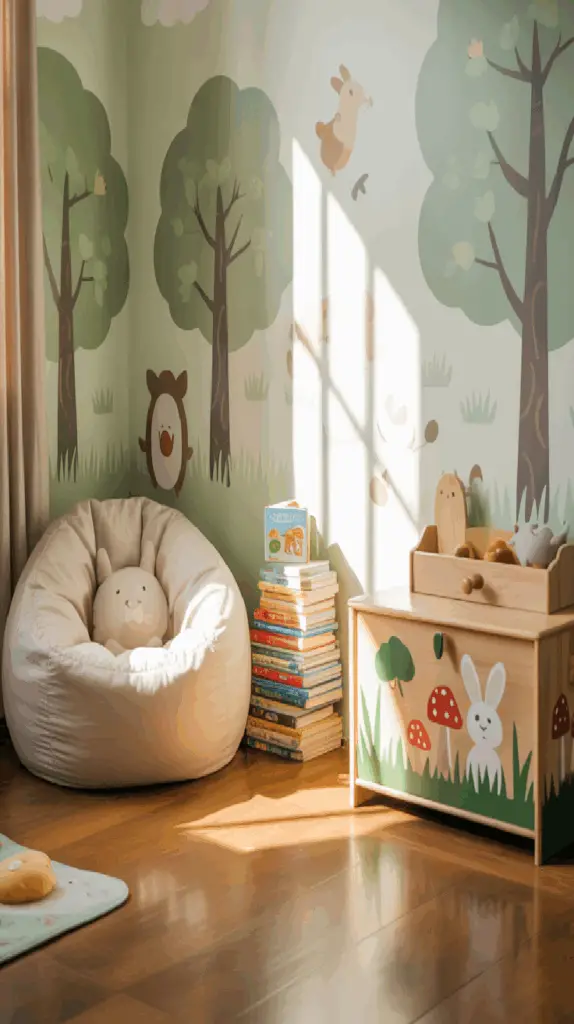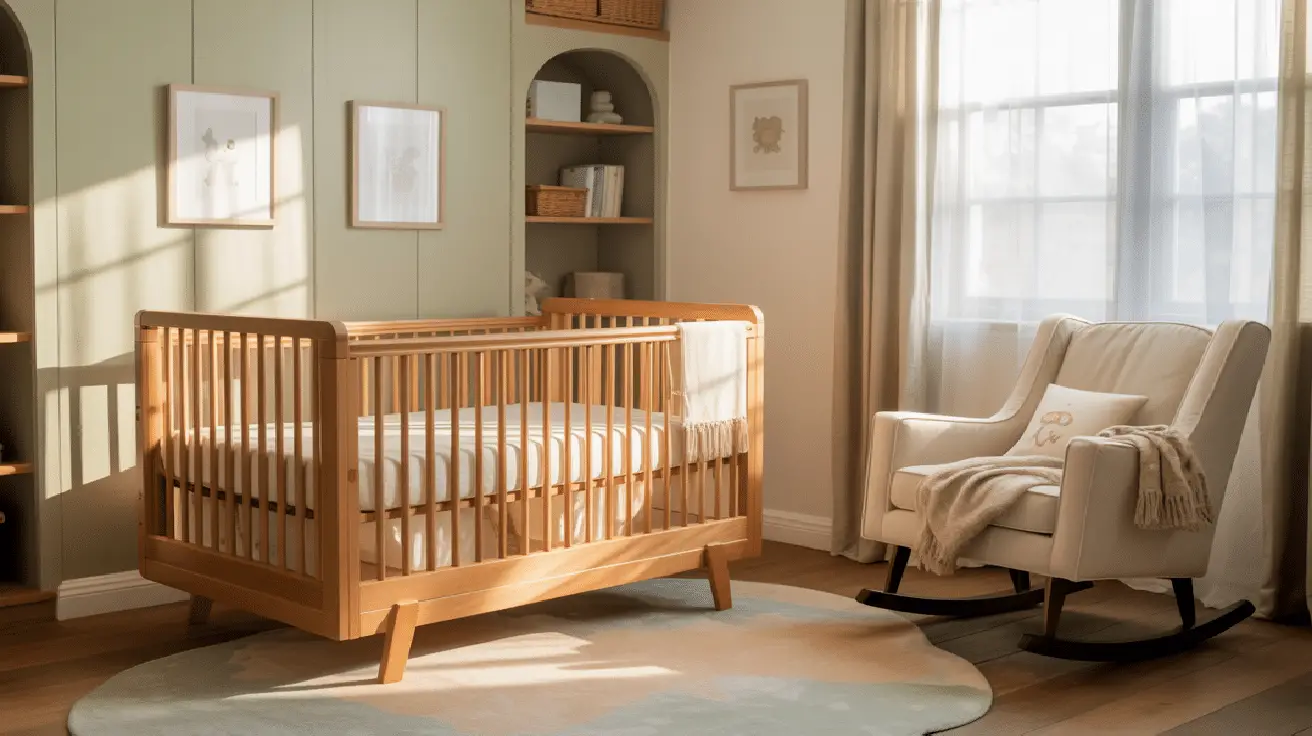Create a Whimsical Nursery That Grows With Your Child: Tips for Timeless, Flexible Design
Table of Contents
Introduction
Designing a nursery for your baby is an exciting journey filled with endless possibilities, but it can also come with a challenge: How do you create a space that’s both magical and functional enough to grow with your child over the years? A whimsical nursery is more than just a cute room filled with stuffed animals and pastel colors. It’s about creating a space that nurtures creativity, provides comfort, and adapts as your child’s needs change.
While many parents start with a traditional nursery, the idea of designing a space that can transition as your child grows is becoming increasingly popular. A whimsical nursery doesn’t need to be confined to baby furniture and décor—it can evolve into a stylish room for toddlers and older children without requiring an entire overhaul.
In this blog, we’ll explore how you can design a whimsical nursery that is flexible, functional, and enchanting at the same time. We’ll share creative ideas for incorporating elements that are playful yet sophisticated, and show you how to use colors, furniture, and décor that can grow with your child. Whether you’re expecting a baby or planning a room makeover, this guide will give you everything you need to create a room that stays fresh and magical as your child grows.
1. Start with a Timeless Theme That Sparks Imagination
When designing a whimsical nursery, it’s important to choose a theme that is both playful and versatile enough to grow with your child. A timeless theme that sparks imagination will ensure that the room doesn’t feel outdated as your child ages. Instead of opting for trendy characters or fads, consider themes inspired by nature, travel, or even abstract concepts like stars, the ocean, or forests.
For example, a woodland theme could feature subtle woodland creatures, trees, and natural textures that will still feel appropriate as your child becomes a toddler and beyond. This type of theme allows you to incorporate playful details—like forest creatures on the walls or soft, nature-inspired fabrics—while maintaining a sense of sophistication.
To help guide your design, choose colors, shapes, and patterns that feel inviting yet timeless. Soft, muted tones like earthy greens, soft blues, and warm neutrals are perfect for a whimsical nursery that will look as lovely when your child is a teenager as it does when they are a newborn. The key is to create a space that provides a sense of wonder without feeling too “babyish” in a few years.
2. Choose Furniture That Grows with Your Child
One of the best ways to ensure your nursery evolves with your child is to choose furniture that can serve multiple purposes. Convertible cribs, for example, can transform into toddler beds and later into full-sized beds as your child grows. This not only saves you money but also ensures that the furniture fits the room and your child’s needs at every stage.
Additionally, opt for storage solutions that are flexible. For example, choose a dresser with ample storage that can later double as a changing table. Consider modular shelving units or toy bins that can be adjusted as your child’s interests and toys evolve. Furniture that can be easily updated with accessories, like new drawer pulls or colorful throw pillows, allows you to refresh the room without investing in entirely new pieces.
For lighting, a playful chandelier or string lights can be perfect for a whimsical nursery and easily transition into a child’s room without feeling out of place. Likewise, a comfortable chair or rocking chair can grow with you—becoming a space for reading, homework, or simply lounging once the infant years are over.
3. Embrace the Power of Color
The colors you choose for a whimsical nursery can set the tone for the entire room. While soft pastels are a classic choice for a baby’s room, don’t shy away from incorporating bold, unexpected hues to add character. A whimsical nursery doesn’t have to be limited to the traditional pinks and blues. Consider rich greens, mustard yellows, soft grays, or even blush pinks paired with other contrasting tones like navy or gold.
When using bold colors, balance them with neutral walls or accents. For example, a pale gray wall can serve as the backdrop for vibrant throw pillows or colorful art prints. If you love the idea of a bold accent wall, you might consider a playful mural or a painted geometric pattern that your child can grow into.
For nurseries that are meant to transition through different stages of childhood, neutral tones are often the best choice for walls and larger furniture pieces. From there, you can layer in pops of color with textiles, art, and décor items. This allows you to change the vibe of the room easily by swapping out accessories as your child’s interests shift over time.

4. Incorporate Interactive Elements and Playful Details
To truly make a nursery whimsical, you need to infuse a sense of playfulness into the design. This doesn’t mean that every element has to be a cartoon character or overly cutesy, but rather incorporating interactive elements that stimulate your child’s imagination and senses. A small reading nook with a cozy armchair and a stack of books encourages early literacy, while a toy chest with quirky details like animal-shaped handles can make storage fun.
Wall decals and murals are also a great way to add whimsy to the space without overwhelming it. You can choose designs that reflect nature, outer space, or a dreamlike fantasy world—anything that fuels a child’s sense of adventure. Think of a forest backdrop with trees and animals that can be enjoyed during playtime and even as your child grows older.
For older children, consider incorporating elements like a chalkboard wall or magnetic wall strips that allow for interactive art. These simple additions make the room feel alive, ensuring the nursery will continue to spark curiosity as your child grows into their creative years.
5. Create Zones for Different Activities
As your child grows, their needs will evolve, and so should the nursery’s layout. A well-designed room can be divided into distinct zones for different activities, like sleeping, playing, reading, and art projects. Create a cozy sleeping nook with a crib or toddler bed, then add a play area with floor cushions or a soft rug for tummy time.
For older children, consider adding a study nook with a desk, a comfortable chair, and a bookshelf stocked with books and supplies. This not only helps the room grow with your child’s age but also fosters a sense of organization. It’s important to make sure that each zone has its own unique, functional purpose while still maintaining a cohesive look throughout the room.
By designing your nursery with distinct activity zones, you can encourage development and create a space where your child can both relax and be active. The goal is to give them an environment that supports their ever-changing needs.
6. Let Nature Inspire Your Nursery
Incorporating natural elements into your nursery design is a simple yet effective way to add warmth and whimsy to the room. From wooden furniture to plant life, nature-inspired design can create a calming atmosphere that fosters a love of the outdoors.
Consider adding indoor plants or botanical prints to infuse the space with greenery. Plants like snake plants, pothos, and peace lilies are easy to care for and safe for a nursery. You can also include wood accents through furniture, wall art, or a wooden mobile hanging above the crib.
Natural elements provide texture and interest while promoting relaxation and tranquility. And because nature is timeless, these elements will continue to enhance the room as your child grows, helping them develop a connection with the world around them.
7. Conclusion
Designing a whimsical nursery that grows with your child is all about creating a space that evolves with them. From choosing timeless themes and versatile furniture to embracing colors and interactive elements, every choice you make should nurture their creativity and development while remaining flexible for years to come. A well-thought-out nursery can become a beloved space that your child will cherish well into their teens, fostering imagination, comfort, and joy for many years.

